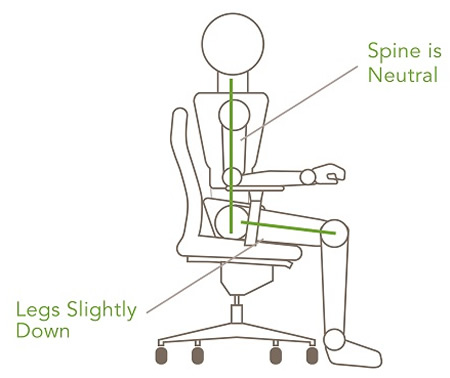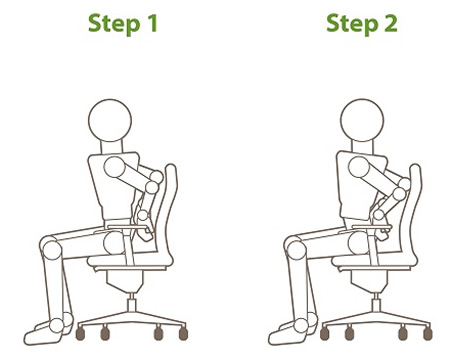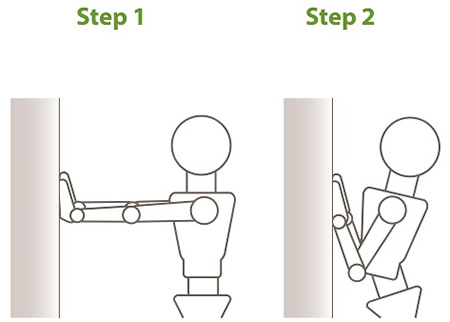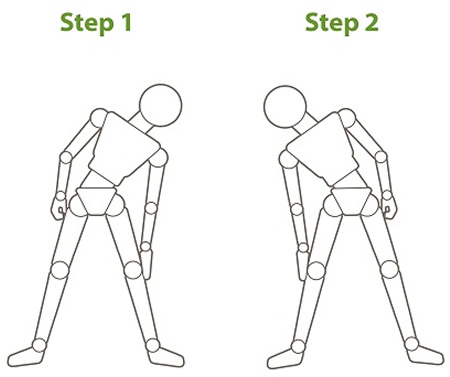Positive Health Online
Your Country

Staying Healthy at Work
listed in back pain, originally published in issue 255 - June 2019
With 31 million days lost to musculoskeletal conditions in the UK every year, protecting your back – or the backs of your employers – has never been more important.
Mark Fletcher, Clinical Director at occupational physiotherapy provider Physio Med, investigates the most common causes of back pain at work and the ways in which they can be prevented, as well as offering advice and recommending exercises employees can carry out in order to help them increase mobility and reduce pain levels.
With a significant number of jobs today being desk-based, Mark also provides information on the correct sitting posture.
There are a number of activities in the workplace that may contribute to developing musculoskeletal disorders (MSDs), such as standing for long periods of time, repeatedly carrying out repetitive activities, lifting objects and operating machine tools, all of which can cause tension and stiffness in the lower back over time if left unattended.
Carrying heavy items is another feature of many people’s working days which can cause back problems. If you are required to carry something heavy, try to hold items close to your body while keeping your back straight and twist from your feet, not your back or shoulders. Under no circumstances should you twist or over-reach while carrying heavy items as this will damage your lower back, upper back and shoulders, while repeatedly lifting and carrying heavy loads can cause repetitive strain injuries to the knees.
Furthermore, as more jobs become desk based or sedentary, more people are spending long periods of time sitting down and this is another cause of back issues. Sitting for five hours a day, five days a week equates to 1,175 hours – or almost 50 days - every year. However, sitting for longer than just 20 minutes has negative effects on the whole body, including an increase in musculoskeletal problems such as back and neck problems, while extended periods of sitting can affect the whole of the spine, which can then affect the shoulders, arms, elbows and wrists.
In order to prevent these negative effects from occurring, employees should move at regular intervals using the ‘20/20’ principle - 20 seconds away from the sitting position every 20 minutes. In other words, you should always try to stand/move every 20 to 30 minutes, even if only to walk a few paces.

Correct Sitting Posture
Sitting incorrectly is another common cause of back problems as it puts extra pressure on various body parts. In order to sit correctly, you first need to become familiar with your optimal sitting position.
This is achieved by keeping the spine in a neutral position, which is done by adjusting the height of your office chair until your feet are flat on the floor and your feet and knees are hip width apart. Starting with your feet together, turn your toes out as far as you can. Next, bring your heels level with your toes, then bring your knees in line with your feet to achieve the optimal position for your legs.
Then, to set the lower part of the spine (lumbar) in a neutral position, sit on your chair with your hands on your hips, then rotate them as far forward as possible. Next, rotate the pelvis backwards as far as you can. With the pelvis in this position, place your rib cage in a straight line above the pelvis in order to make the lumbar spine curve slightly inwards. This is the optimal position for your spine.
To achieve a neutral position for the whole body while sitting, you should also ensure you aren’t leaning too far forward as this puts pressure on the lower neck as it is forced into flexion (as if looking down), whilst the upper part of the neck is forced into extension (as if looking up). To prevent this and attain your body’s neutral position, look straight ahead while tucking your chin back as if you are holding a small ball under your chin.
Most people find this position hard to hold at first. In fact, many people can’t hold the posture for more than five minutes initially so you will need to remain patient until you are able to hold the position for longer periods.
The most important thing to remember when sitting is to maintain the curvature of the lower spine. Your lower spine should curve away from the back of the chair and the best way to make sure this happens is to support it.
Some people may already have a chair with lumbar support built in, however, if your chair isn’t supportive, a good idea is to put cushions at the base of your spine as this will do the same job. Supporting your lower spine is vital because it also helps keep your neck and head in a comfortable position, helping prevent both back and neck ache.
There are an enormous variety of chairs available these days, such as kneeling chairs, saddle chairs and ergonomic chairs, however, the most important thing to remember when choosing a chair is to ensure it is adjustable and able to support your posture. Rather than spending time trying to find the perfect chair, it is more advisable to work on correcting your sitting posture.
There are numerous precautions that can be taken to prevent back issues occurring, however, if an injury does occur, there are also several exercises that can be carried out to increase mobility and reduce pain levels*. These include:

Lower Back Stretching
Lower Back Stretches
This simple exercise stretches out the tissue in the lower part of the back, alleviating pressure and stress on the area. To perform it,
- Sit in a chair and place your hands on the lower part of your back just above belt level;
- Arch your back as you gently press with your hands to assist the movement;
- Hold your back in this arched position for 2 seconds, then return to the start position. Repeat five times.

Standing Lower Back Stretching
Standing Lower Back Stretches
This is another great exercise for stretching the lower back and reducing the build up of tension.
- Stand facing a wall with your feet shoulder width apart and your hands on the wall at shoulder height with your arms straight out in front of you;
- Bend your elbows and allow your back to arch until you feel a gentle stretch in the base of the spine;
- Slowly return to the starting position and repeat five times.

Side Bend Exercises
Side Bends
This exercise helps maintain movement in the lower back.
- Stand up tall with you arms on the outside of your thighs;
- Slowly bend sideways by sliding one hand down one thigh towards the floor;
- Slowly return to the upright position and repeat on the other side. Repeat five times.
If you are concerned about back pain, and no advice or exercises seem to be helping, you should consider visiting a qualified physiotherapist who can help restore movement and function and reduce your risk of injury in the future. A pain-free back is of the utmost importance; ensuring it remains that way should be a priority for everyone.
* Before undertaking any exercise programme, you should first visit your GP or a physiotherapist to ensure it is safe for you to do so.
Comments:
-
No Article Comments available